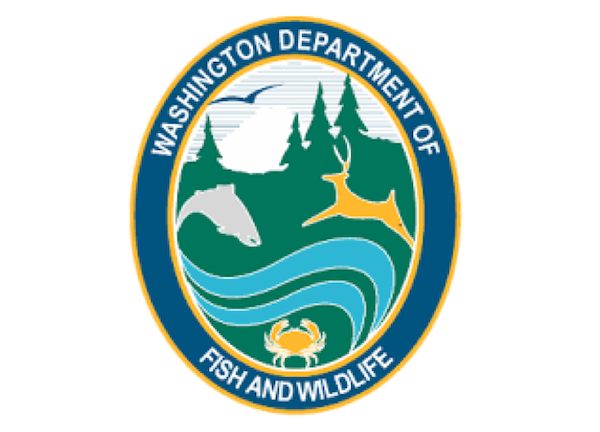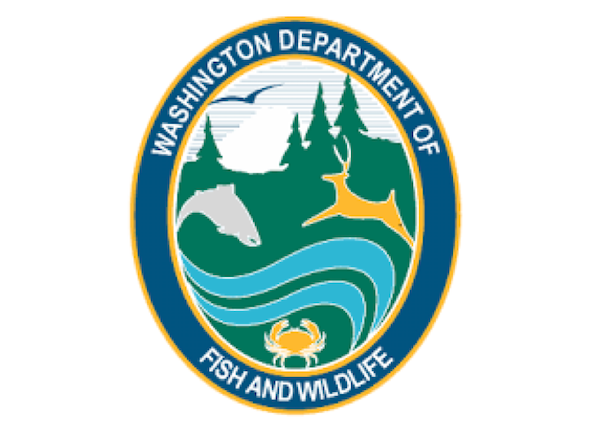Idaho Fish Report
Recreational spot shrimp fishery scheduled to open May 25 in much of Puget Sound

by WA Department of Fish & Wildlife Staff
4-6-2023
Website
OLYMPIA – It’s that time of year: Many Puget Sound marine areas open for recreational spot shrimp fishing beginning May 25, including the reopening of Elliott Bay for the 2023 season.
Hood Canal and Discovery Bay, meanwhile, will open May 26.
Overall, the 2023 season will start around the same time and with similar opportunities compared to last year, with the exception of Elliott Bay reopening, fishery managers with the Washington Department of Fish and Wildlife (WDFW) announced.
“This is a very popular recreational fishery, and a marker for many that the warmer days are truly upon us,” said Don Velasquez, longtime WDFW shellfish biologist. “We can’t wait to see folks out enjoying themselves on the water, carrying out one of Puget Sound’s great regional traditions.”
The selected dates reflect a conscious effort to offer opportunities to harvest while keeping participants distributed and reducing the chance of exceeding recreational quotas. Due to high expected turnout, some areas can’t support any weekend openings while remaining within their current quota.
As always, WDFW is asking for cooperation from shrimp fishers to ensure a safe and enjoyable experience. Shrimpers are encouraged to check the weather beforehand and if your vessel can’t safely participate, then please do not launch or leave the dock. Before arriving at the launch for a day on the water, check with local access ramps and marinas to stay informed on potential closures or fee changes and avoid surprises. Also allow extra time for launching boats and show courtesy to others at the boat ramps.
All shrimp -- including spot, dock, coonstripe, sidestripe, and pink shrimp -- can be kept as part of the daily limit. However, because only larger-mesh (1-inch) traps are allowed during the announced season, most harvest will be spot shrimp. Also known as prawns, spot shrimp are the largest shrimp in Puget Sound and may grow up to 9 inches in length.
2023 Puget Sound recreational spot shrimp seasons:
Marine Area 4 east of the Bonilla-Tatoosh Line: Open daily beginning May 25, daylight hours. The recreational spot shrimp season closes when the quota is met.
Marine Area 5 (western Strait of Juan de Fuca): Open daily beginning May 25, daylight hours. The recreational spot shrimp season closes when the quota is met.
Marine Area 6 (Port Angeles Harbor, eastern Strait of Juan de Fuca, excluding the Discovery Bay Shrimp District): Open May 25-28, June 8-10, June 22-24, July 7-10, and July 21-23. Daylight hours.
Marine Area 6 (Discovery Bay Shrimp District): Open on May 26 from 9 a.m. to 1 p.m. only.
Marine Area 7 South (Iceberg Point, Point Colville, Biz Point, Salmon Bank): Open May 25-28 and June 8-10. Daylight hours.
Marine Area 7 East (northern Rosario Strait, Bellingham Bay, Sucia and Matia islands, Strait of Georgia): Open May 25-28 and June 8-10. Daylight hours.
Marine Area 7 West (San Juan Channel, Speiden Channel, Stuart and Waldron islands): Open May 25-28, June 8-10, June 22-24, and July 7-10. Daylight hours.
Marine Areas 8-1 (Saratoga Passage, Deception Pass) and 8-2 (Port Susan, Port Gardner, Everett): Open on May 25 and June 9 from 9 a.m. to 1 p.m. only.
Marine Area 9 (Edmonds, Port Townsend Bay, Admiralty Inlet): Open on May 25 from 9 a.m. to 1 p.m. only.
Marine Area 10 (Elliott Bay): Open May 25 from 9 a.m. to 1 p.m. (this is the portion of Marine Area 10 east of a line from West Point to Alki Point).
Marine Area 10 (outside Elliott Bay): Open May 25 from 9 a.m. to 1p.m. (this is the portion of Marine Area 10 west of a line from West Point to Alki Point, which includes the Bainbridge Island shrimp fishing grounds).
Marine Area 11 (Tacoma-Vashon Island): Open May 25 from 9 a.m. to 1 p.m.
Marine Area 12 (Hood Canal Shrimp District): Open on May 26, June 9, June 11, June 24, and June 28 from 9 a.m. to 1 p.m. only.
Marine Area 13 (South Puget Sound, Carr Inlet): Closed for spot shrimp harvest again this season due to continued low abundance.
Additional dates and times may be announced if enough quota remains after the initial fishing days listed above. Visit WDFW’s recreational shrimp fishing website for the latest regulations.
Regulations
In all areas of Puget Sound, the daily limit per fisher is 80 spot shrimp with a total daily weight limit of 10 pounds (whole shrimp) for all species of shrimp combined. Shrimpers who retain only spot shrimp may remove and discard the heads while in the field and before returning to shore. Shrimpers retaining any shrimp species other than spot shrimp must continue to retain the heads until finished and on shore to verify compliance with the 10-pound daily limit.
A valid 2023-24 combination license, shellfish license, Fish Washington license, or Get Outdoors license is required to participate in the fishery.
Shrimpers are reminded that traps can be set one hour before official sunrise during any open period in the marine areas without specified harvest hours. These include marine areas 4, 5, 6 (except for the Discovery Bay Shrimp District), 7 East, 7 South, and 7 West.
The pots must be removed from the water in these same areas by one hour after sunset at the end of an open period. The start and end times for all other areas are listed above.
More information on recreational shrimp seasons, and a description of the marine areas, is available on WDFW's recreational shrimp fishing website.
Seasons for non-spot shrimping (dock, coonstripe, sidestripe and pink shrimp only) will begin later this year and will be announced separately. During those seasons 1/2-inch mesh pots are allowed, depth restrictions are in place, and all spot shrimp are required to be released immediately.
Shrimp fishers are reminded to follow Be Whale Wise regulations and guidelines to help protect endangered Southern Resident killer whales (SRKW). Avoid approaching SRKW, and at minimum stay the required distance away (reference the Be Whale Wise website for more information). Anglers are also encouraged to watch for the Whale Warning Flag, an optional tool from the San Juan County Marine Resources Committee that lets others know that there might be whales nearby. If you see the flag, slow down and follow guidelines. For more details about steps anglers can take to keep the whales – and themselves – safe, visit BeWhaleWise.org.
The Washington Department of Fish and Wildlife works to preserve, protect, and perpetuate fish, wildlife and ecosystems while providing sustainable fish, wildlife, and recreational and commercial opportunities.


